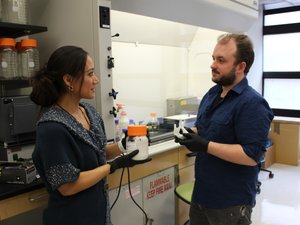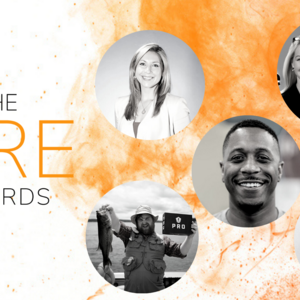It started with a college baseball box score. And an algorithm.
Five years ago, journalism and computer science students at Northwestern University discovered a way to create a computer-generated baseball game story based on the data from a box score. It was incredibly fast, accurate, and sounded just as if a human were writing the game recap. The program, known then as StatsMonkey, garnered a lot of publicity and caused quite a stir in the journalism community, prompting Businessweek to ask: Are Sportswriters Really Necessary?
"It was blindingly straightforward and successful," said Kris Hammond, CTO and co-founder of the company. "People were stunned that a machine had done this."
But Hammond and others in the company knew that StatsMonkey could tackle much more sophisticated data sets than a simple box score, and in 2010 Narrative Science was Born. Narrative Science left Northwestern, got an office in the Loop, and today has 50 employees working with dozens of companies to generate content. The technology has been used to create financial earnings reports, give employers comprehensive reports on employees based on job performance metrics, and it can even handicap a horse race. And this year Narrative Science introduced a product called Quill Engage, a free application that uses Google Analytics data to generate a natural language report, allowing companies to better understand the traffic on their website.
"It's ubiquitous," Hammond said. "There is no place where the technology is not going to reach. There's going to be a day, and it's a foreseeable day, when people look at spreadsheets in the same way they look at computer punch cards ...The notion that a spreadsheet is a communication vehicle is ridiculous. Our goal is to wipe it off the planet."
Narrative Science's list of clients includes Forbes, the Big Ten Network and Yahoo, but many of its partners prefer to remain anonymous, Hammond said. For Forbes, Narrative Science produces daily computer-generated company earnings previews, pulling stock data to profile each business. At the Big Ten Network, it goes back to its roots and creates stories from box scores. Here's an example of Narrative Science at work after a Duke Men's Basketball win over Ohio State:
Mason Plumlee scored 21 points and grabbed 15 rebounds to lift No. 2 Duke to a 73-68 win over No. 4 Ohio State on Wednesday at Cameron Indoor Stadium in Durham. Ohio State (4-1) struggled shooting the ball in the game.
The Buckeyes made 70 percent of their free throws (16-of-23) and they shot 34 percent (23-of-67) from the field. Duke (7-0) shot 20-of-27 from the free throw line. The Blue Devils also got double-digit games from Quinn Cook, who scored 12, Ryan Kelly, who scored 15, and Rasheed Sulaimon, who scored 17. Amir Williams scored four points and grabbed 10 rebounds for Ohio State in the loss.
The Buckeyes got double-digit efforts from Deshaun Thomas, who scored 16 and Lenzelle Smith, Jr. and Aaron Craft, who each scored 11.
Hammond said about half of Narrative Science's clients are in financial services, 20 percent in government, 10 percent in marketing, and the other 20 percent scattered among different industries.
But what sets the company apart from other organizations that are analyzing data is that Narrative Science's content isn't about understanding data; it's about using the data to understand something larger, Hammond said.
"When we take data and tell you a story, we're not telling you a story about the data. We're telling you stories about the world," he said. "That's what makes us shockingly different in the data space. We don't think anybody wants to know about data. We want to know about the world."
A good example is Narrative Science's work with Pro Publica, which wrote stories on every high school in the country by examining federal education data to see whether states provided high-poverty schools equal access to advanced courses and special programs. It's a tool useful for parents interested in what schools are available to their children, and how those schools stack up with others nearby.
Hammond was tight-lipped about what's next for Narrative Science, but he said to expect some announcements in the near future. With Narrative Science's model, companies now have a greater understanding of the vast amount of data available to them. And as the company grows, more businesses will be able to gain a better understanding of the world around them.
"We take the data one more level deeper," he said. "Here's how you can make this better. Then the story becomes not just a review or a retrospective. You can take immediate action. And that's super powerful."
Photo via Narrative Science








